Born in 1926, Eric Bartholomew adopted the name of his native town and enjoyed a highly successful career as one half of the Morecambe and Wise double-act. Just around the corner from this pub is the statue of Eric Morecambe, set against the backdrop of Morecambe Bay. Appropriately, the statue shows him in a one-legged pose. Visitors pose alongside ‘Eric’ for photos and delight in the lyrics from his best-known song, Bring Me Sunshine, carved into the granite steps leading to his statue.
Prints and text about The Eric Bartholomew.
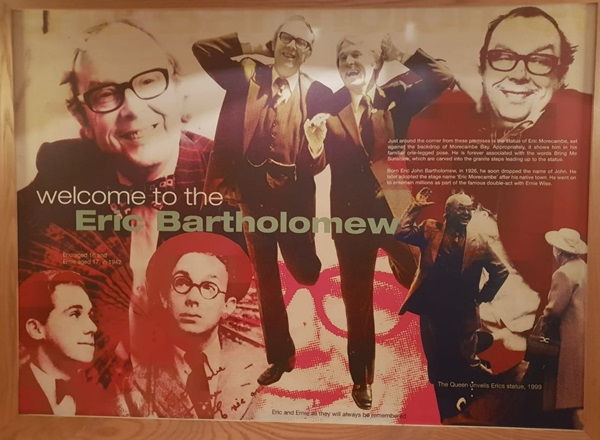
The text reads: Just around the corner from these premises is the statue of Eric Morecambe, set against the backdrop of Morecambe Bay. Appropriately, it shows him in his familiar one-legged pose. He is forever associated with the words Bring Me sunshine, which are carved into the granite steps leading up to the statue.
Born Eric John Bartholomew, in 1926, he soon dropped the name of John. He later adopted the stage name ‘Eric Morecambe’ after his native town. He went on to entertain millions as part of the famous double-act with Ernie Wise.
Prints and text about Morecambe.
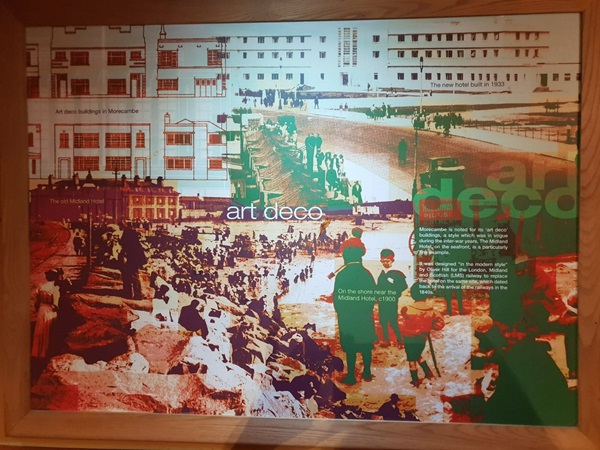
The text reads: Morecambe is noted for its art deco buildings, a style which was in vogue during the inter-war years. The Midland Hotel on the seafront, is particularly fine example.
It was designed “in the modern style” by Oliver Hill for the London, Midland and Scottish (LMS) railway to replace the hotel on the same site, which dated back to the arrival of the railways in the 1840s.
Photographs of Morecambe’s palaces.
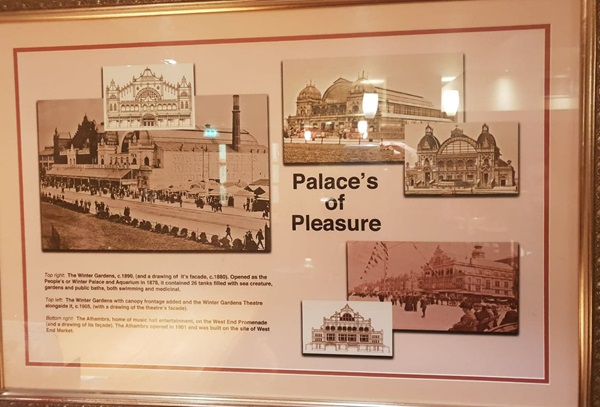
Top right: The Winter Gardens, c1890, (and a drawing of its facade, 1880). Opened as the People’s or Winter Palace and Aquarium in 1878, it contained 26 tanks filled with sea creature gardens and public baths, both swimming and medicinal.
Top left: The Winter Gardens with canopy frontage added and the Winter Gardens Theatre alongside it, 1905, (with a drawing of the theatre’s façade).
Bottom right: The Alhambra, home of music hall entertainment, on the West End Promenade (and a drawing of its façade). The Alhambra opened in 1901 and was built on the site of West End Market.
Prints and text about the history of this site.
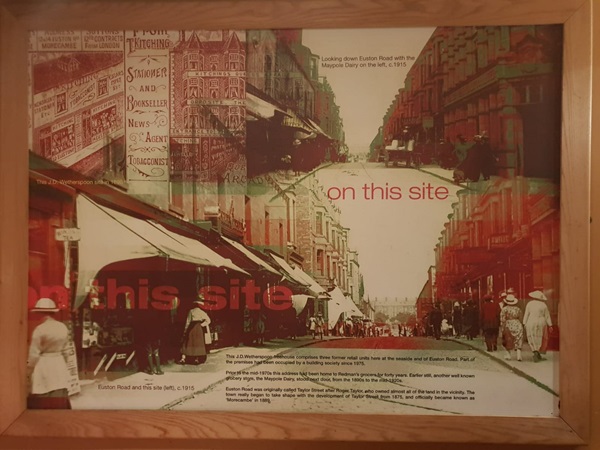
The text reads: This JD Wetherspoon freehouse comprises three former retail units here at the seaside end of Euston Road. Part of the premises had been occupied by a building society since 1975.
Prior to the mid-1970s, this address had been home to Redman’s grocers for forty years. Earlier still, another well-known grocery store, the Maypole Dairy, stood next door, from the 1890s to the mid 1920s.
Euston Road was originally called Taylor Street after Roger Taylor, who owned almost all of the land in the vicinity. The town really began to take shape with the development of Taylor Street from 1875, and officially became known as `Morecambe’ in 1889.
Photographs and text about Morecambe’s piers.
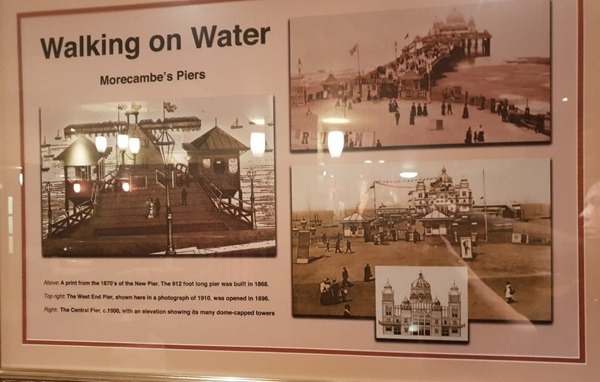
Above: A print from the 1870’s of the New Pier. The 912-foot-long pier was built in 1868.
Top right: The West End Pier, shown here in a photograph of 1910, was opened in 1896.
Right: The Central Pier, 1900, with an elevation showing its many dome-capped towers.
Prints and text about the promenade.
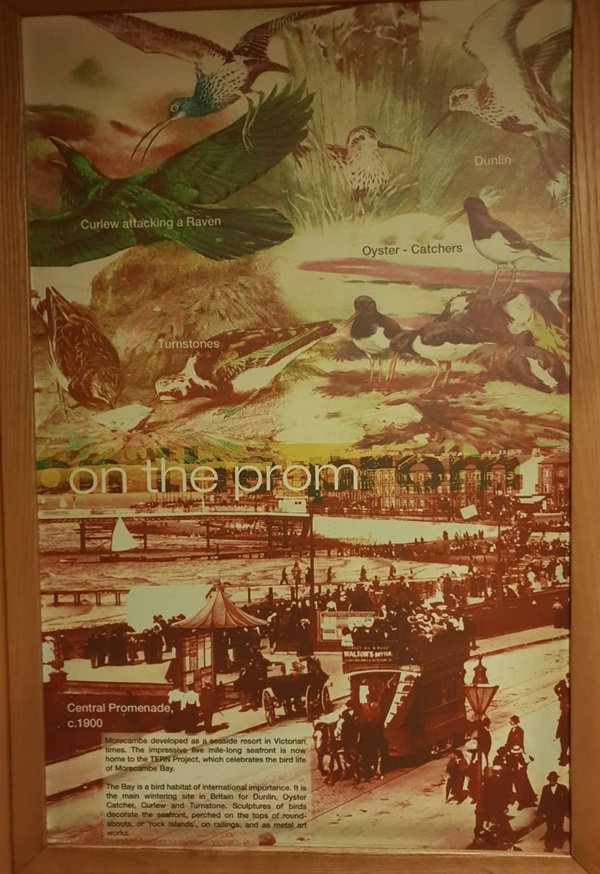
The text reads: Morecambe developed as a seaside resort in Victorian times. The impressive five-mile-long seafront is now home to the TERN Project, which celebrates the bird life on Morecambe Bay.
The Bay is a bird habitat of international importance. It is the main wintering site in Britain for Dunlin, Oyster Catcher, Curlew and Turnstone. Sculptures of birds decorate the seafront, perched on the tops of round-abouts, or `rock islands’ on railings, and as metal art works.
A photograph of Main Street and Euston Road.
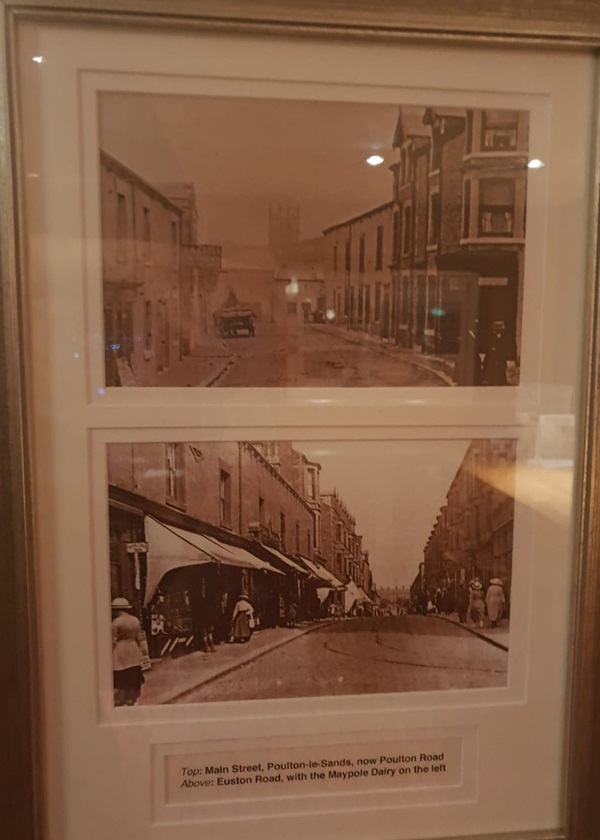
Top: Main Street, Poulton-le-Sands, now Poulton Road
Above: Euston Road, with Maypole Dairy on the left.
A photograph of Euston Road 1910, looking towards the bank building across the road from this site.
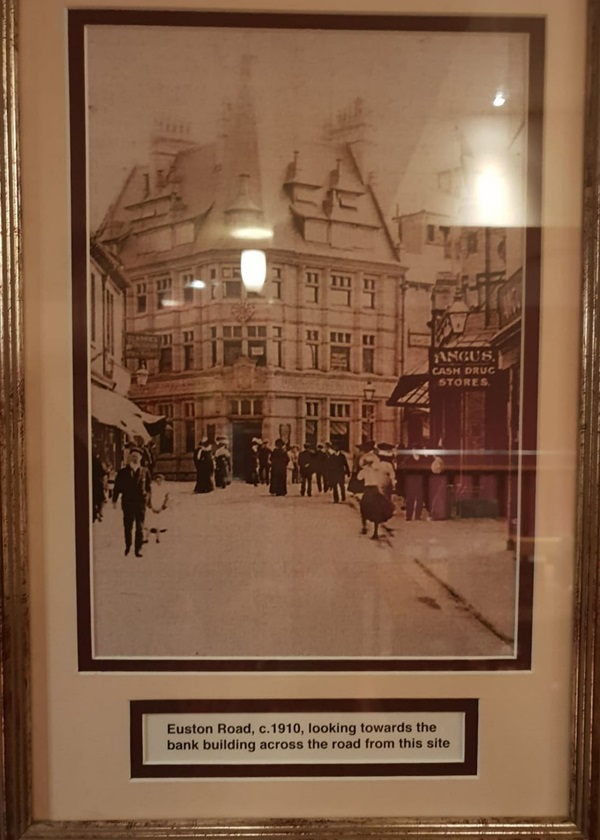
External photograph of the building – main entrance.
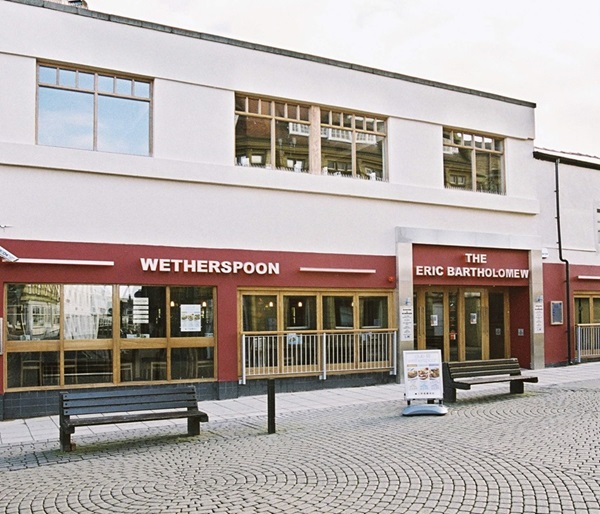
If you have information on the history of this pub, then we’d like you to share it with us. Please e-mail all information to: pubhistories@jdwetherspoon.co.uk